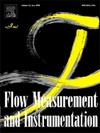水液压人工肌肉关节流量补给阀的设计、仿真与实验分析
IF 2.3
3区 工程技术
Q2 ENGINEERING, MECHANICAL
引用次数: 0
摘要
水液压人工肌肉关节(WHAMJ)的运动速度和能耗随着控制阀流量的增加而增加。为实现运动速度快、能耗低的目标,提出了一种新型流量补给阀。流量补充阀连接在压差阀和WHAMJ之间。当WHAMJ运动时打开,以提高运动速度,当WHAMJ稳定时关闭,以防止产生额外的流量。在此基础上,设计了几种流动补给结构形式,并进行了仿真分析。通过比较,选择了最佳补货形式,并制造了样机。通过实验进一步分析了补液效果。结果表明,流量补充阀在不影响系统稳态流量的情况下,提高了阀控WHAMJ的转速,提高了阀控WHAMJ的实用性。本文章由计算机程序翻译,如有差异,请以英文原文为准。
Design, simulation, and experimental analysis of water hydraulic artificial muscle joint flow replenishment valve
The movement speed and energy consumption of the water hydraulic artificial muscle joint (WHAMJ) increase with the increase of the control valve flow rate. To achieve both fast movement speed and low energy consumption, a new-type flow replenishment valve was proposed. The flow replenishment valve is connected between the pressure difference valve and the WHAMJ. It opens when the WHAMJ is moving to increase the movement speed, and closes when the WHAMJ is stable to prevent additional flow rate generation. Based on the principle, several flow replenishment structure forms were designed, and the simulation analysis was carried out. Through comparison, the best replenishment form was chosen, and a prototype was manufactured. The replenishment effect was further analyzed by experiments. The results show that the flow replenishment valve can increase the WHAMJ speed without affecting the steady system flow rate, improving the practicability of the valve-controlled WHAMJs.
求助全文
通过发布文献求助,成功后即可免费获取论文全文。
去求助
来源期刊

Flow Measurement and Instrumentation
工程技术-工程:机械
CiteScore
4.30
自引率
13.60%
发文量
123
审稿时长
6 months
期刊介绍:
Flow Measurement and Instrumentation is dedicated to disseminating the latest research results on all aspects of flow measurement, in both closed conduits and open channels. The design of flow measurement systems involves a wide variety of multidisciplinary activities including modelling the flow sensor, the fluid flow and the sensor/fluid interactions through the use of computation techniques; the development of advanced transducer systems and their associated signal processing and the laboratory and field assessment of the overall system under ideal and disturbed conditions.
FMI is the essential forum for critical information exchange, and contributions are particularly encouraged in the following areas of interest:
Modelling: the application of mathematical and computational modelling to the interaction of fluid dynamics with flowmeters, including flowmeter behaviour, improved flowmeter design and installation problems. Application of CAD/CAE techniques to flowmeter modelling are eligible.
Design and development: the detailed design of the flowmeter head and/or signal processing aspects of novel flowmeters. Emphasis is given to papers identifying new sensor configurations, multisensor flow measurement systems, non-intrusive flow metering techniques and the application of microelectronic techniques in smart or intelligent systems.
Calibration techniques: including descriptions of new or existing calibration facilities and techniques, calibration data from different flowmeter types, and calibration intercomparison data from different laboratories.
Installation effect data: dealing with the effects of non-ideal flow conditions on flowmeters. Papers combining a theoretical understanding of flowmeter behaviour with experimental work are particularly welcome.
 求助内容:
求助内容: 应助结果提醒方式:
应助结果提醒方式:


